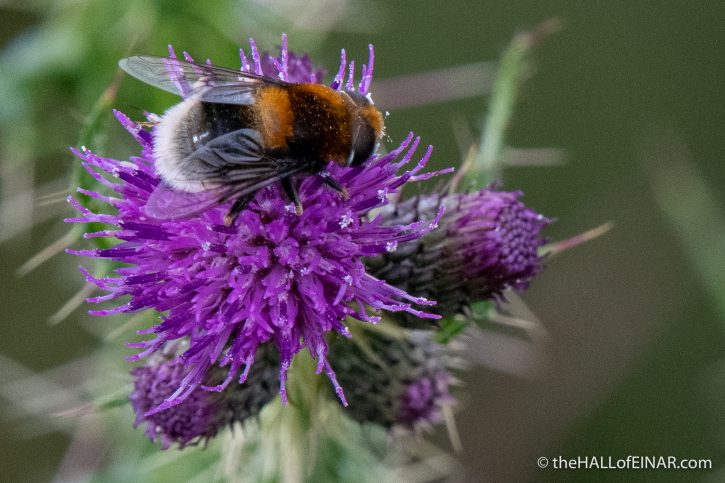To bee or not to bee
There’s a bumble bee on this thistle. At least I think it’s a bee. Then I see its eyes.

Its eyes are far too big to be a bee. Its eyes are so big they nearly meet in the middle. I know some people like that.
It also has really short antennae. Bees have long antennae. I don’t know any people with antennae. Crucially I can see only one pair of wings. That’s the final clue which screams ‘fly’ at me. Do things often scream ‘fly’ at you? No, thought not. Bees have two pairs of wings; a big pair and a little pair. Hoverflies have just one pair of wings clearly visible. It’s Eristalis intricarius, a bumble bee mimicking hoverfly.
Its classic habitat is wetland: raised bog; fen; fen carr; poorly-drained deciduous forest and humid, seasonally-flooded grassland. Welcome to Orkney.
The tiny advantage having a superficial resemblance to bees with a sting has given over evolutionary time, as a warning to potential predators, has led to their ever closer resemblance to bees. It’s a fly in bee’s clothing.
It’s a wannabee.